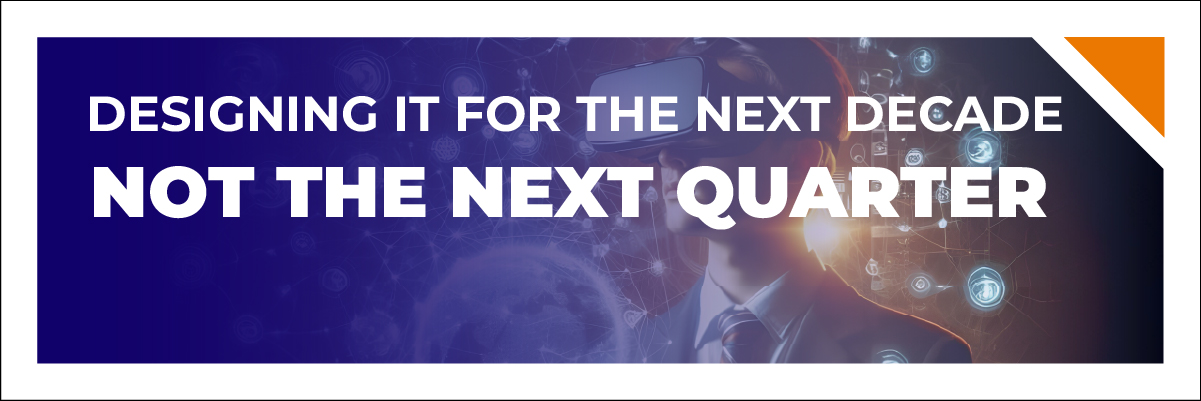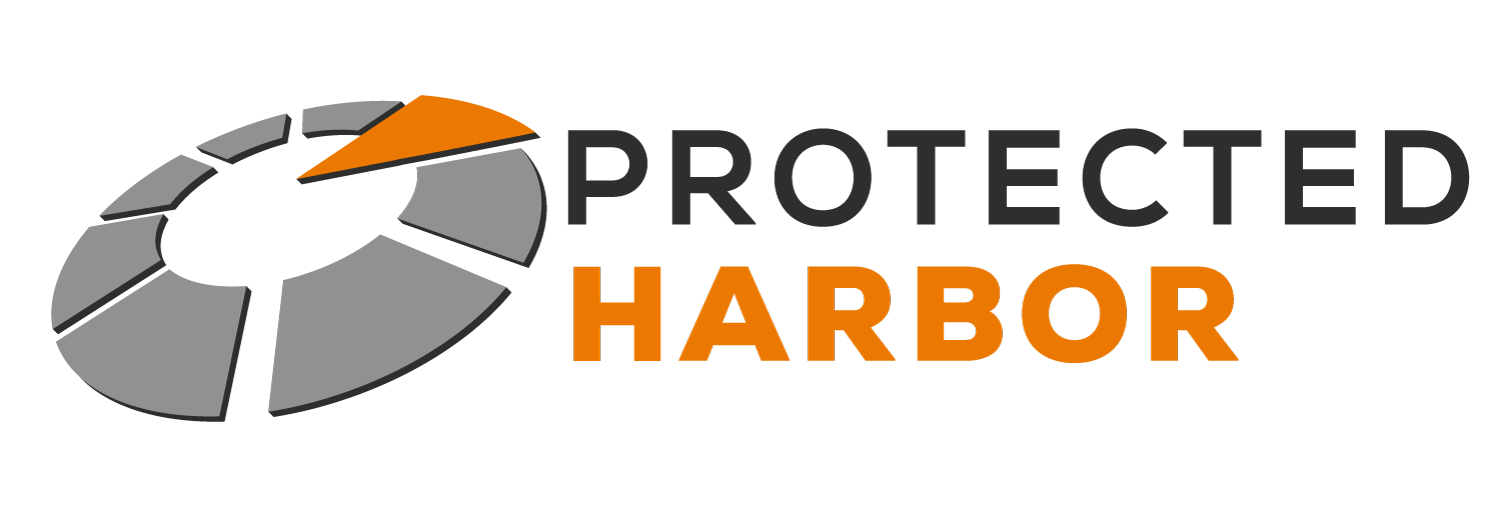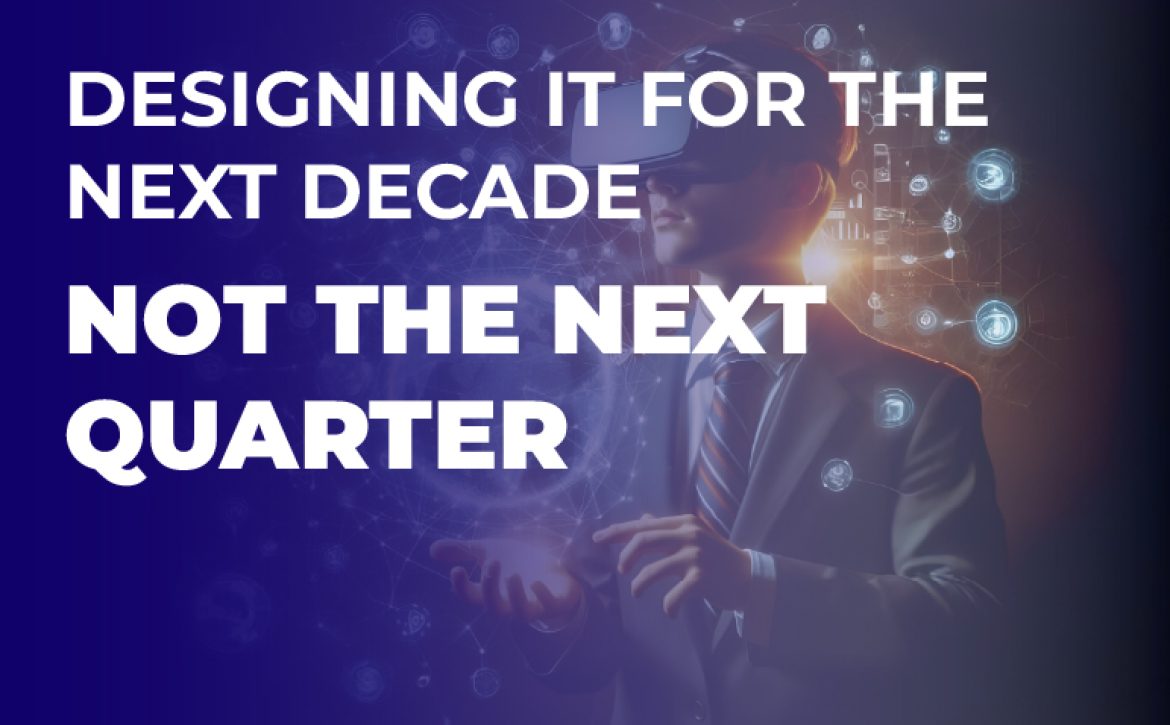Designing Technology Systems That Last Beyond the Next Quarter

Designing IT for the Next Decade, Not the Next Quarter
Most IT environments aren’t built for the future — they’re built for survival. Quick fixes, short-term budgeting, vendor-driven decisions, and quarter-to-quarter planning create systems that work today but fail tomorrow. And when the foundation isn’t designed for longevity, instability, downtime, and technical debt become inevitable.
Organizations don’t fall behind because technology moves too fast. They fall behind because their IT was never designed to keep up in the first place. At Protected Harbor, we see the same pattern across industries:
Systems that should last ten years barely survive two — not because the tech is bad, but because the strategy behind it is.
The Problem: IT Designed for the Quarter Creates Long-Term Debt
Short-term IT decisions usually begin with good intentions — a budget cycle, a deadline, a vendor recommendation, or “just get us through this year.” But over time, these choices compound into architectural debt that drags down the entire organization.
Here’s how it happens:
- Temporary fixes become permanent
Patches, one-off scripts, emergency allocations — all meant to be temporary. But no one circles back, and suddenly they become core infrastructure.
- Vendor-driven architecture replaces business-driven architecture
Cloud providers and MSPs often recommend what fits their tools — not what delivers predictability for your operation.
- Systems are sized for where you were, not where you’re going
Teams grow. Data grows. Regulatory requirements grow. But the environment rarely evolves with them.
- Technical debt becomes operational risk
“We’ll fix it later” turns into outages, performance problems, and reactive firefighting. Short-term thinking doesn’t just slow down IT — it slows down the business.
The Business Impact: Stability Isn’t Optional
In the coming decade, organizations won’t be judged by the flashiness of their tech — but by the reliability of it. When environments aren’t built for longevity, the consequences are predictable:
- Rising Operational Costs
Emergency fixes, cloud overconsumption, and instability drain budgets.
- Unpredictable Performance
Applications slow under load, deployments fail, downtime creeps upward.
- Security Gaps Multiply
Shortcuts — even small ones — create vulnerabilities that stack over time.
- Lost Productivity & Trust
Teams lose hours each week fighting the same recurring issues. Leadership loses confidence.
The result? A partnership that feels transactional, not transformational.
Users lose patience.
The cost of short-term IT isn’t measured in invoices — it’s measured in lost momentum.
The Real-World Pattern We See Every Day
Across industries, across teams, across environments — the pattern is always the same.
IT environments rarely fail because the technology is bad.
They fail because the system was never designed as a long-term foundation — It was assembled quarter by quarter, vendor by vendor, quick fix by quick fix.
And by the time organizations reach us, common symptoms have already surfaced:
- Systems are fragile.
- Leadership is frustrated.
- Teams are stuck firefighting instead of improving.
- Recurring issues feel “normal” because no one has had the space to solve them.
- Technical debt grows faster than progress.
And the solution is never another patch.
It’s never another tool.
It’s never another temporary workaround.
It’s a different philosophy.
A shift from survival-mode IT… to intentional, resilient, decade-ready design.
The Protected Harbor Difference: Build for the Next 10 Years, Not the Next 10 Months
We don’t design IT for “right now.”
We design environments that get stronger over time — not weaker.
Here’s how we architect for the next decade:
1. Full Stack Ownership
Infrastructure → Network → DevOps → Security → Support
One accountable team = zero drift, zero silos, zero finger-pointing.
Longevity becomes part of the architecture — not an afterthought.
2. Engineered to Scale Before You Need It
We design systems that flex with your business —
add locations, staff, workloads, or data without breakage.
3. We Prevent Problems Others React To
Our philosophy is simple:
Make IT boring.
Meaning stable, predictable, invisible — because everything just works.
4. Built With a 10-Year Lens
We’re not here to sell the next project.
We’re here to eliminate the need for constant projects.
5. Transparent Communication + 15-Minute Response Times
Longevity is also relational.
We earn trust with:
- consistent updates
- clear explanations
- proactive alerts
- human response within minutes
Predictability isn’t an outcome — it’s a design principle.
How to Design IT for the Next Decade (Not the Next Quarter)
A practical framework for leadership:
1. Start with the outcome — not the vendor.
Define the result: uptime, continuity, performance, compliance. Build backwards.
2. Prioritize architecture over tools.
Tools change.
A strong foundation lasts.
3. Eliminate single points of failure. Everywhere.
Hardware, software, networking, staffing — redundancy is non-negotiable.
4. Build for failure, not perfection.
Assume something will break.
Design the system so nothing stops.
5. Review quarterly — design for ten years.
Short-term activities should strengthen long-term strategy, not undermine it.
Final Thoughts: Longevity Is a Strategy
Most IT problems aren’t surprises —they’re symptoms of short-term design. The organizations that thrive over the next decade will be the ones who build their IT with intention, resilience, and foresight.
Not as a cost center.
Not as a patchwork.
But as a long-term strategic asset.
That’s the philosophy we bring to every client, every system, every environment.



